Fans of Habring2 may remember the launch of Felix in 2014, a watch powered by Austria’s first in-house movement, Caliber A11, created to celebrate the tenth anniversary of the independent Austrian brand. With a name like Felix – Latin for “happy” – this watch can only have come from the most cheerful watchmakers I know: Maria and Richard Habring.
Caliber A11 was the first watch movement developed, assembled, and predominately produced in Austria. It became the base movement for Habring2 going forward, now having spawned nine iterations. The A in the base movement stands for “Austria,” while the “11” stands for 2011, the year the watchmaker couple began developing the movement.
Now, following the Doppel-Felix, Chrono-Felix, and Chrono-Felix Panda, which was recently shortlisted by the 2020 Grand Prix d’Horlogerie de Genève, Habring2 introduces Foudroyante-Felix in a new 38.5 mm case.
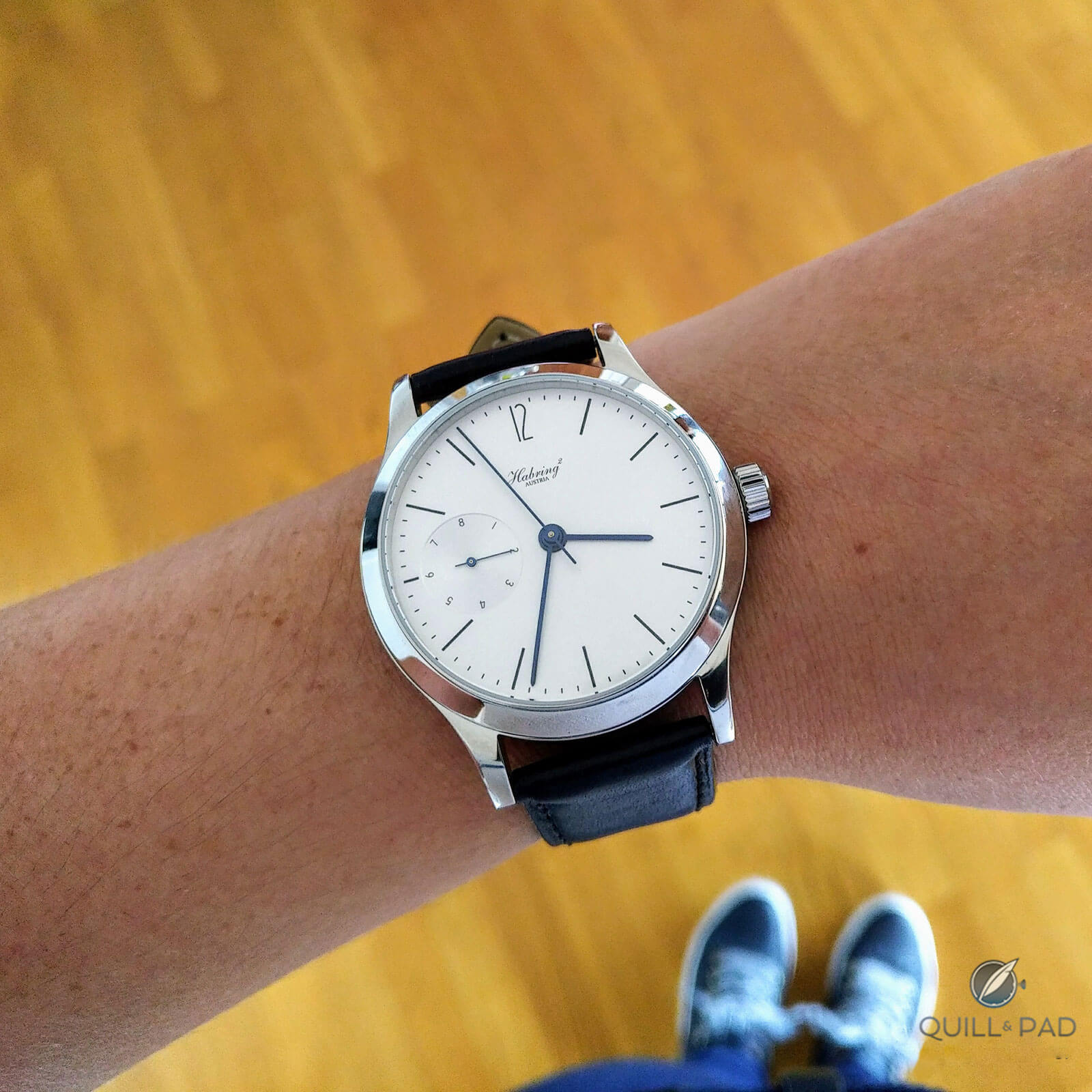
Habring2 Foudroyante-Felix 38.5 mm on the wrist
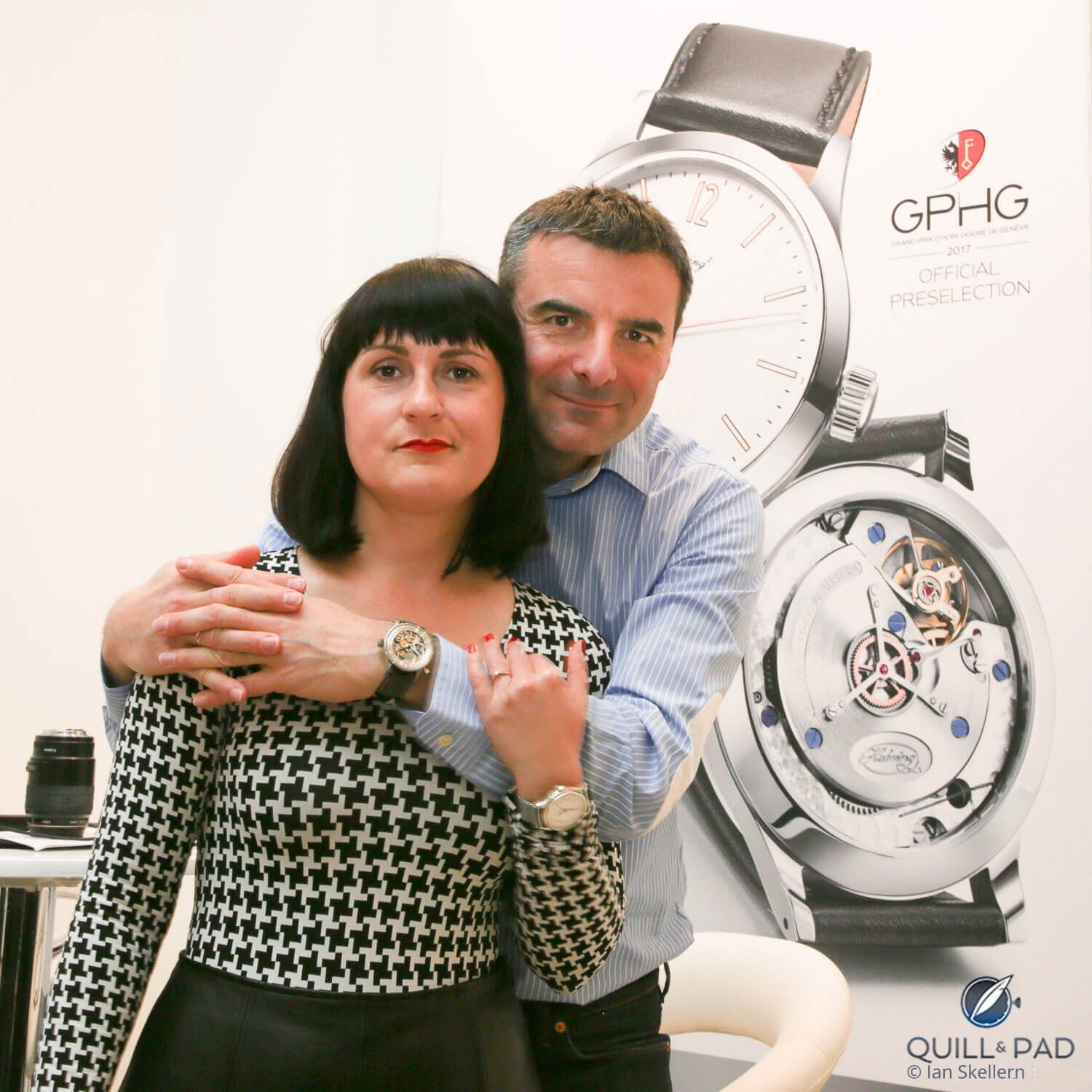
Maria and Richard Habring
Foundroyante hand of the Habring2 Felix
I asked Maria Habring why she and Richard decided to bring a foudroyante into the Felix family, and as usual she had a great answer. “The foudroyante has been a Habring2 ‘family member’ already for ten years; we like to say it’s the philosopher in our family,” she answered with what I’m sure was a great smile through the e-mail.
“It reminds us how fast the time goes,” she continued. “And exactly that is why we should value every single second in our days. I always say when I wind a watch – especially a manually wound watch – give the time some time. Carpe diem, every second counts!”
And you can bet that this function is as charming as that answer was.
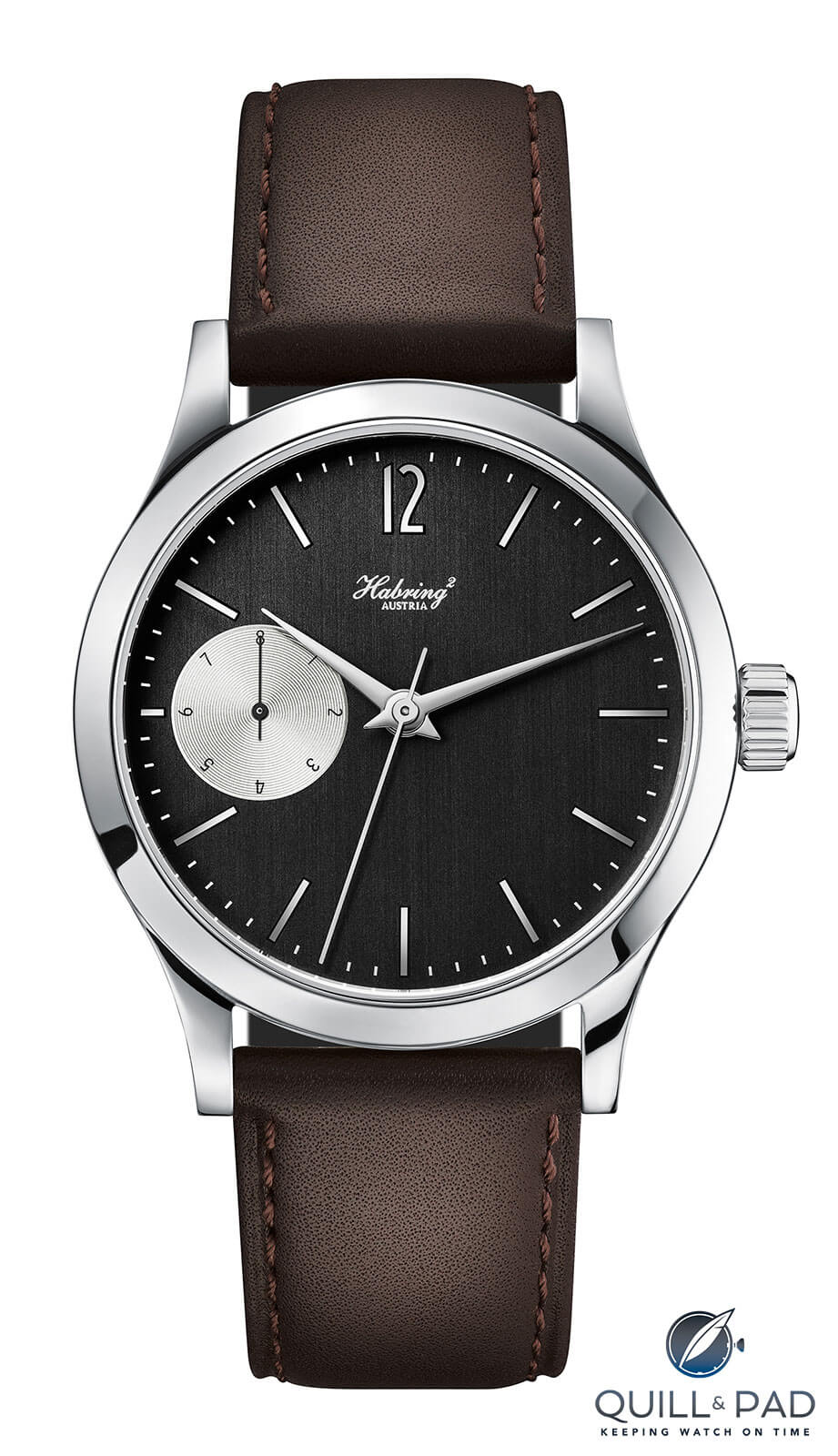
Habring2 Foudroyante-Felix in 38.5 mm with black dial
The lightning speed – which makes up the origin of the complication’s name as foudre is French for “lightning” – of the hand is very visually alluring. Sometimes the foudroyante is called “flying seconds,” and there is a good reason for that: the hand displays each individual tick of the escape wheel by meshing with another toothed wheel attached to it.
This foudroyante wheel has the same number of teeth as the beats per second of the balance, so one rotation of the gear equals exactly one second – which creates a blazingly fast hand that races in circles, but stops completely (though not discernibly with the naked eye) with every tick.
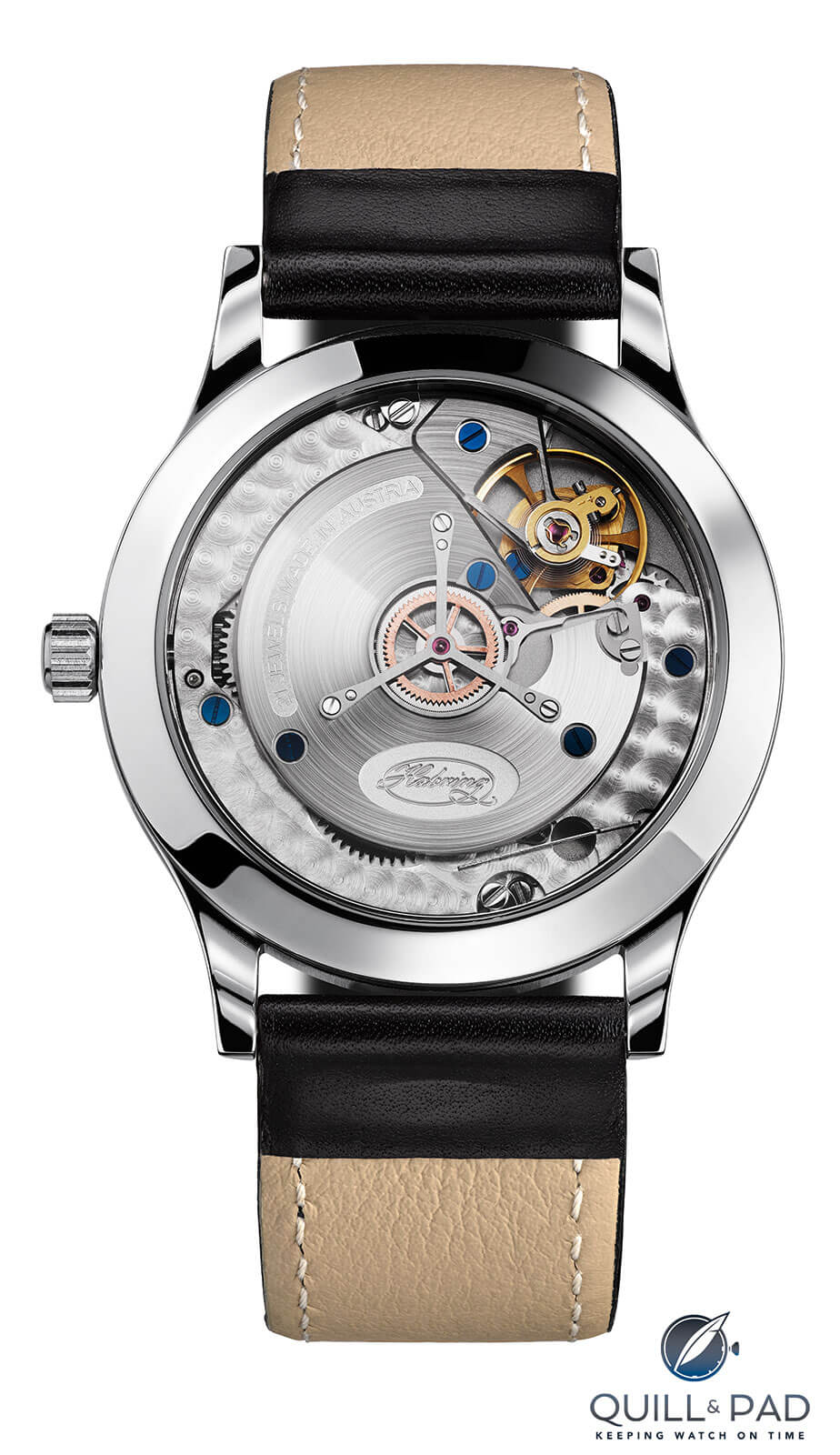
The attractive back of the Habring2 Foudroyante-Felix 38.5 mm
The technical challenges accompanying the foudroyante include rapid power consumption, the probability of introducing significant timing inaccuracies, and the need for a very well balanced and lightweight hand to prevent wear or drag on the escapement (part of those timing inaccuracies).
Visually this function is incredibly impressive, but unlike a sweep second or deadbeat second hand, it doesn’t have much real-world use because it simply moves too quickly to discern where it is at a given time. But it does capture the attention of eyes glancing at one’s watch. And how: it makes 86,400 complete revolutions around its subdial in a 24-hour time period. In one month this is more than 2.5 million revolutions!
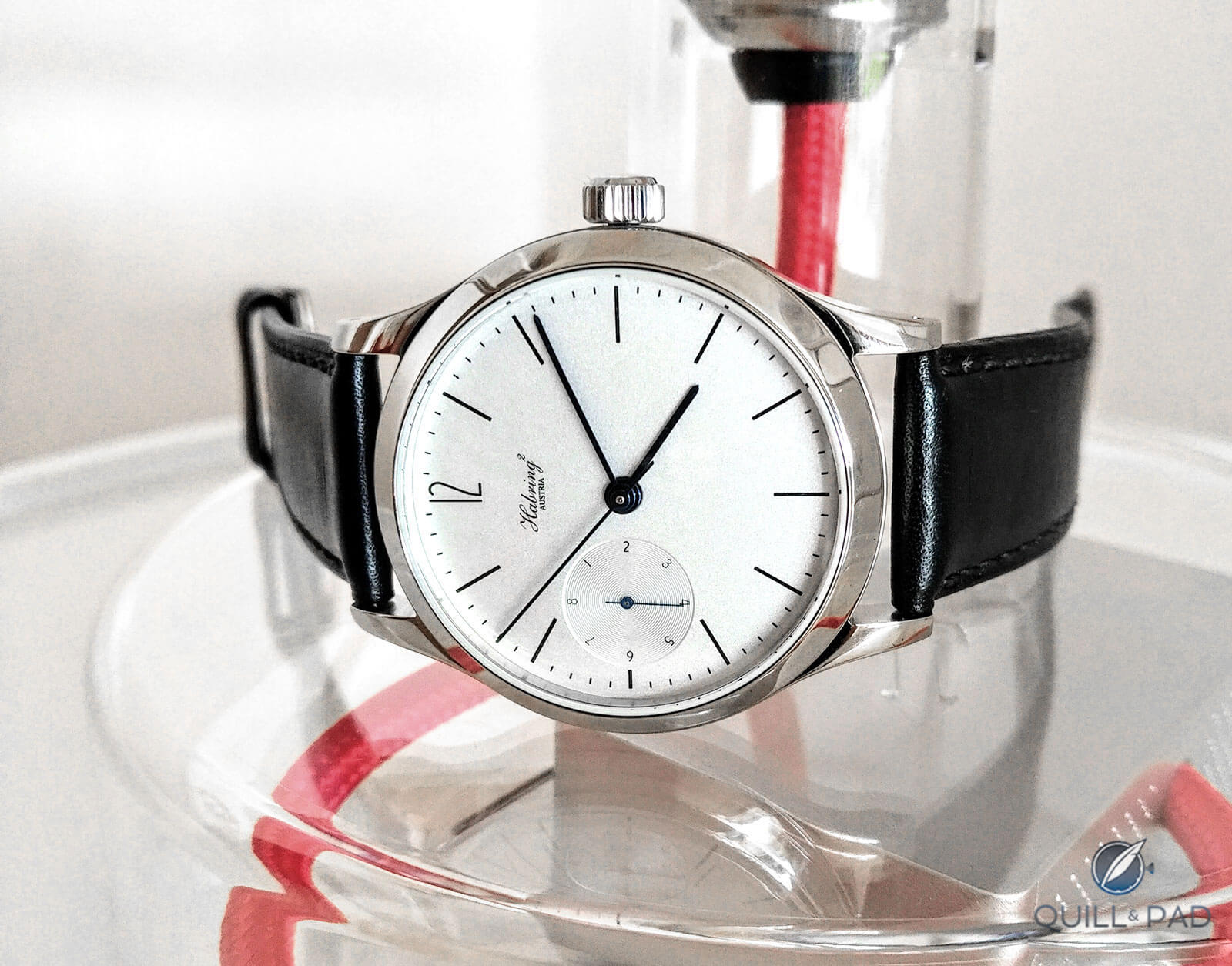
Habring2 Foudroyante-Felix 38.5 mm with silver dial
But this would not be a Habring2 watch if there weren’t yet another tiny little twist, speaking of deadbeat seconds: aside from the exotic lightning second hand in the subdial at 9 o’clock, you might notice that this watch also has a “regular” sweep second hand.
Turns out it’s not that “regular.”
The central second hand is the Habring2 patented deadbeat seconds. How’s that for fun complication? In action, the watch looks like it was choreographed with the lightning speed of the foundroyante hand in the subdial and the steady, intensely legible tick-tick-tick of the deadbeat hand that not only allows the observer to know the exact second, but also proves the extreme accuracy of the movement despite the “drag” of the little lightning hand.
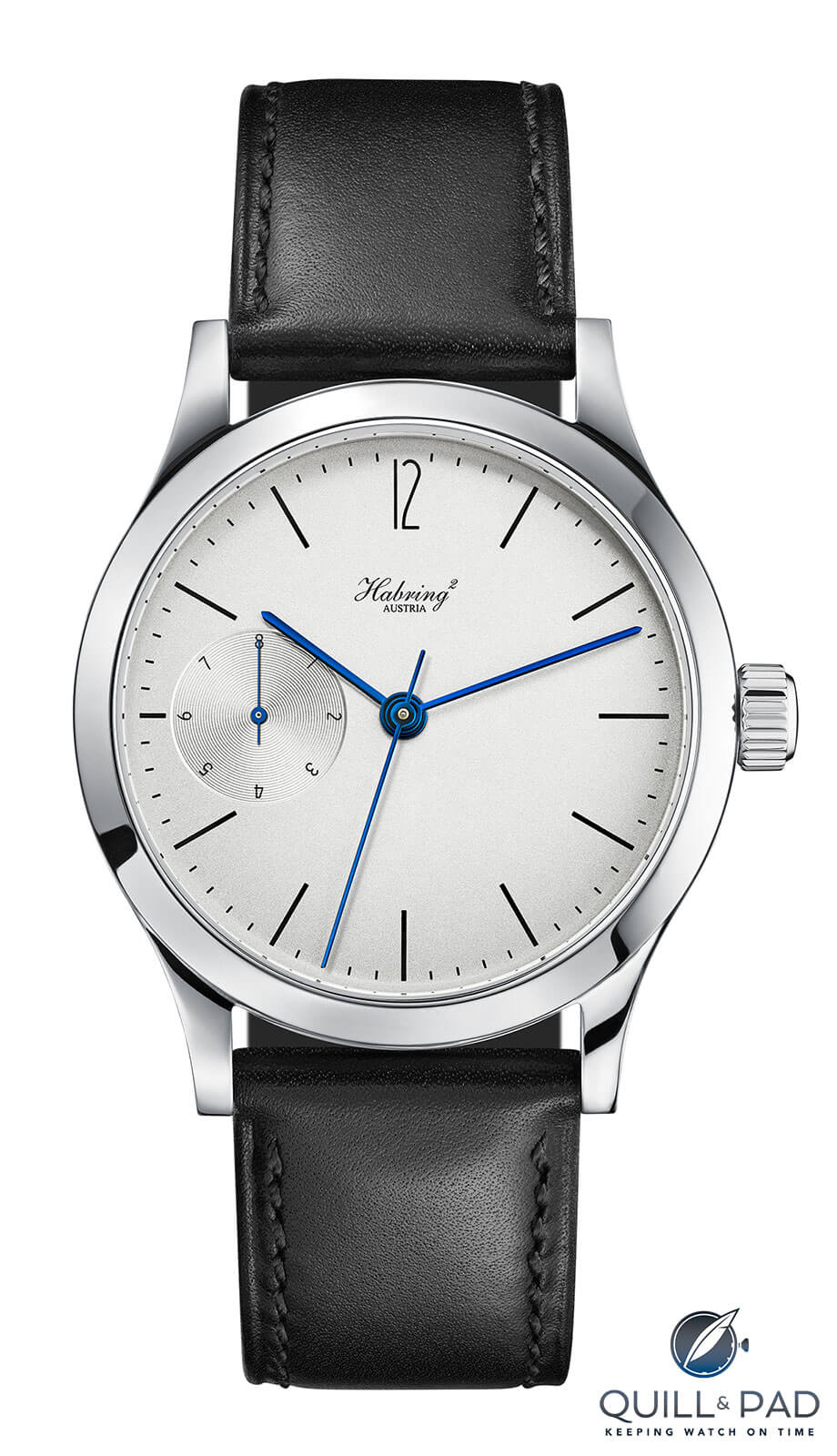
Habring2 Foudroyante-Felix 38.5 mm with silver dial
Habring2 Foudroyante-Felix with 38.5 mm case
Foundroyante-Felix already existed in the Felix family, but only as a 42 mm watch. Now it arrives in a 38.5 mm stainless steel case just like its parent, Felix. And this size is perfect for both large and small wrists, remaining svelte in both diameter (38.5 mm) and height (11 mm).
The look is otherwise classic Felix: original, clean, down-to-earth, and minimalist with a very classic design in the understated, almost Bauhaus style that Germanic timepieces are famous for, no-nonsense approach included. The dial is available in a grained silvery color with classic blued steel hands or a black dial with a silver subdial (wow, way to highlight the lightning!) and polished steel hands.
Like a breath of fresh air, Foudroyante-Felix races along its never-ending path, beating out the time and reminding us once again that Carinthia, Austria couldn’t be a lovelier place – especially for watchmaking.
For more information, please visit www.habring2.com/index/en/collection/foudroyante-2010.
Quick Facts Habring² Foudroyante-Felix
Case: stainless steel, 38.5 x 11 mm, 30 m water resistance
Movement: manually wound Habring Caliber A11F with chronometer-quality non-magnetic Carl Haas balance spring, 28,800 vph/4 Hz frequency, 45-hour power reserve
Functions: hours, minutes, hacking foudroyante seconds, hacking deadbeat seconds
Price: €6,550
You may also enjoy:
Habring2 Gets Happy (And Serious) With Felix, Featuring First Austrian Movement
In Praise Of Habring2: A Collector’s View
Top 5 Least Useful Horological Complications (And Why They Are Still Awesome)
Leave a Reply
Want to join the discussion?Feel free to contribute!





















































Beautiful piece, the black dial version with the silver subdial is my favourite. The indices on that version look applied, is that the case? Also, does this movement have a stop seconds function?
Tom
I asked Maria Habring for those answers, and she explained that the seconds do indeed hack (I have updated that in the Quick Facts) but do not reset. She also says that the markers and numerals are not applied, but are rhodium plated.